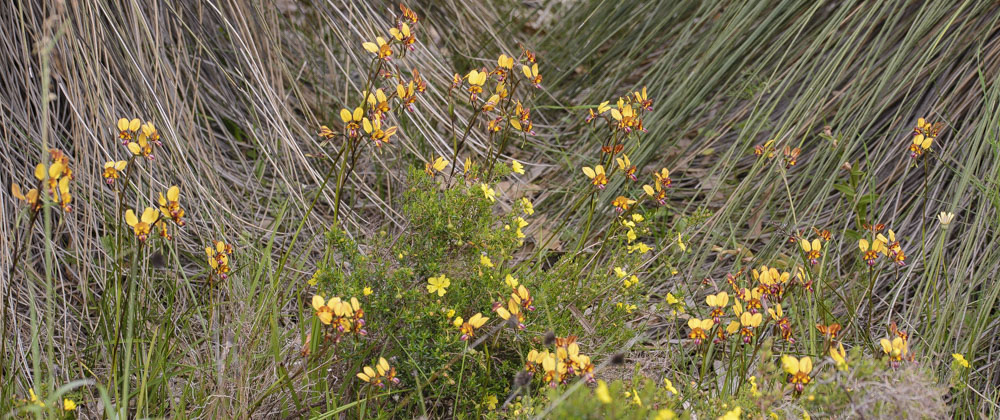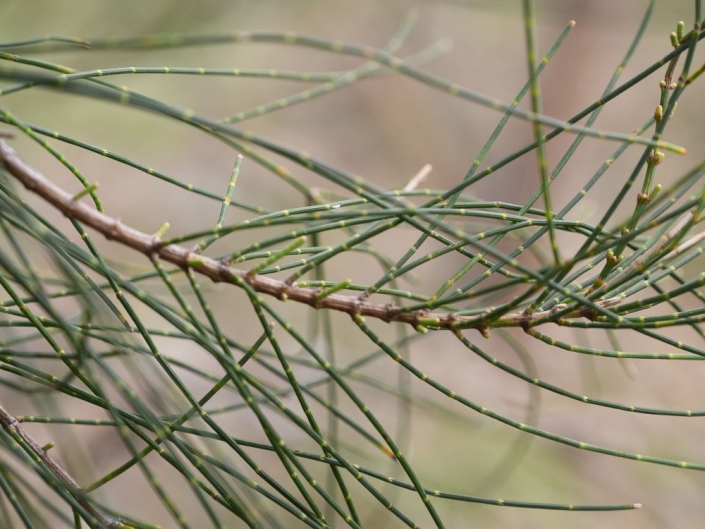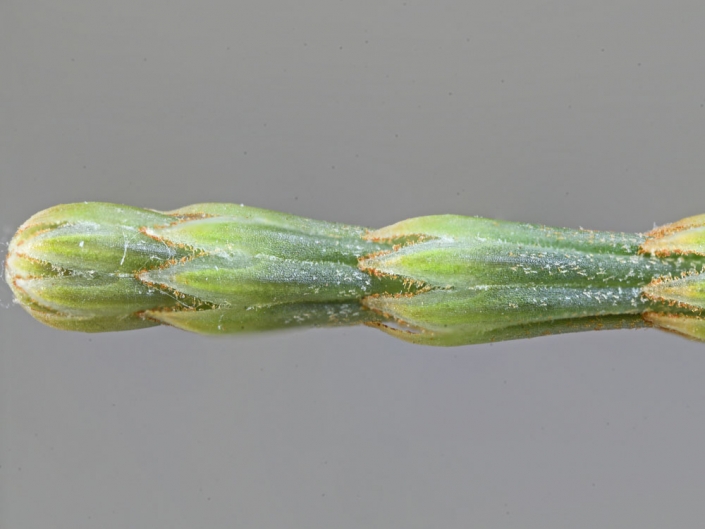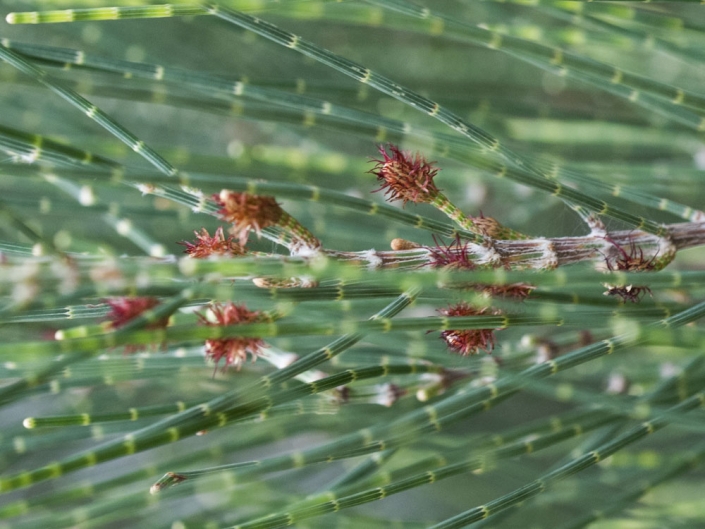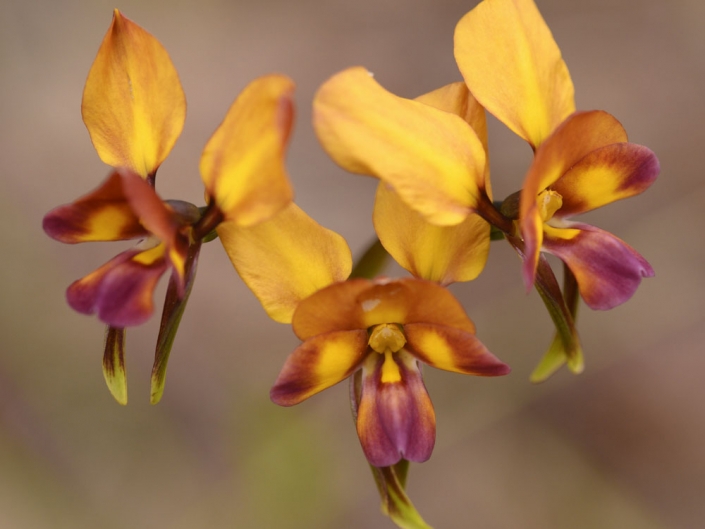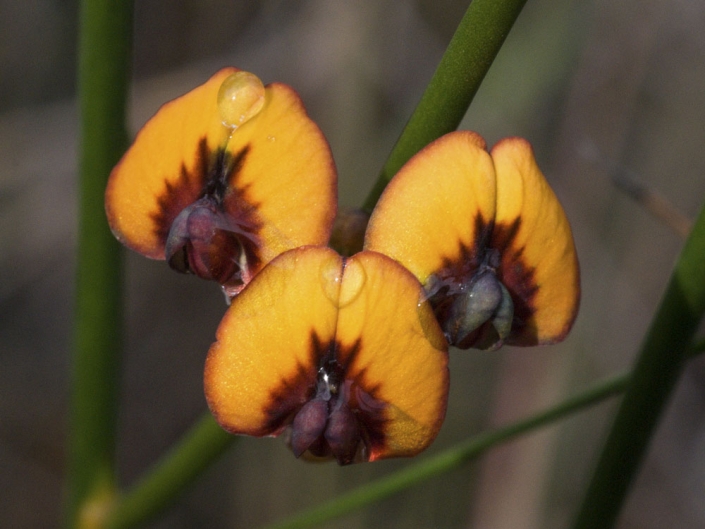Point of Interest 6: Sheoak Area
The trail continues through banksia woodland with jarrahs and several Sheoak trees near the track. The canopy is open with an understorey with many Balgas, shrubs and sedges.
Common Wildflowers (see previous stop also)
Winter – Yellow Buttercups (Hibbertia hypericoides), Swan River Myrtle (Hypocalymma robustum), Menzies Banksia (Banksia menziesii)
Spring – Yellow Buttercups (Hibbertia hypericoides), Coastal Wattle (Acacia cyclops), Marno (Daviesia divaricata), Running Postman, Cottonheads, Pansy Orchids, Pixie Mops (Petrophile linearis)
Late Spring & Summer – Needlegrass (Austrostipa compressa), Candle Banksia
Focus Topic 13. Sheoak Trees
The Common Sheoak is endemic to Western Australia and is the most widespread sheoak found in the Southwest. This tree also known as Allocasuarina fraseriana, is endemic to Western Australia, and grows in the southwest from Jurien Bay to Albany. It was first collected in 1840 by Johann Priess and named in honour of the botanist Charles Fraser. The tree can grow to 15 m in height. Foliage consists of slender green branchlets often mistaken for needles that have tiny worlds of leaves at each node.
Sheoak trees flower from May to October and male or female flowers are produced separately, as shown below. During the flowering season, male trees take on a rusty brown hue due to numerous flowers. Sheoaks are wind-pollinated and the male flowers release abundant pollen into the air. Female trees have intricately branched red filamentous anthers which trap pollen, followed by grey-brown fruiting cones up to 40 mm long that look like small pinecones. Despite their superficial resemblance, sheoak trees are not related to pine trees or any other conifers but are true flowering plants.
Early settlers of Western Australia used sheoak timber for roof shingles. Later it was used in the construction of kegs and casks. It has beautiful timber that is now used to make fine furniture and decorative objects. Thick leaf litter accumulates under trees and is important for small animals and orchids.
Focus Topic 14. Pansy Orchids
The Pansy Orchid (Diuris magnifica) is relatively common in Perth and Warwick Bushland has exceptional mass-flowering of this orchid, which is the basis of our friends group logo. This species is often confused with the common donkey orchid (Diuris corymbosa) which has flowers that are somewhat smaller and less colourful (these orchids see to intergrade). This orchid is disturbance tolerant and prefers relatively open areas, provided they are not dominated by weeds. They often grow in large colonies due to proliferation of tubers and seedlings.
Growing to a height of 60 cm, they flower from late August to mid-September producing 30-40 mm tall yellow flowers usually shaded with purple and orange. Each stem can bear up to eight flowers and there can be dozens or hundreds of flowering stems in a colony. Pollination is by native bees that mistake the donkey orchid flowers for similar-coloured native peas that flowering nearby such as Daviesia species. The native peas provide nectar and pollen to bees, but the orchids do not, so are pollinated by visual deception.
Donkey Orchid Ecological Relationships
Video courtesy of Daniela Scaccabarozzi & Andrea Aromatisi (Earth To Be)




